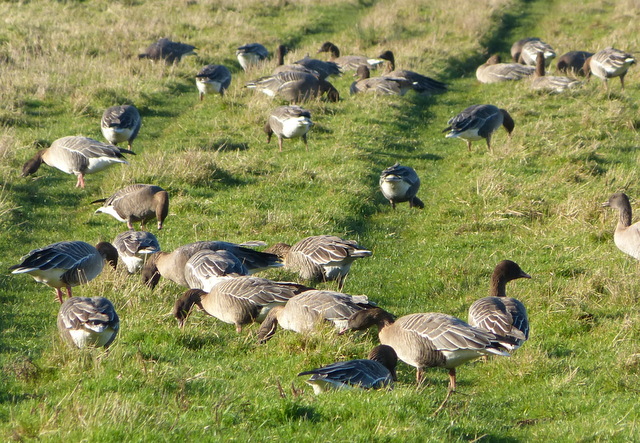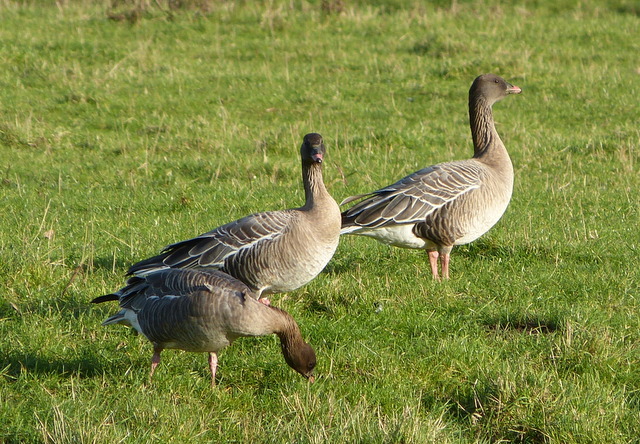A private tour again today. The request was to spend the day watching and photographing geese. There is no shortage of geese in Norfolk in the winter! Getting up close to them can sometimes be more of a challenge.
We went first to Salthouse, which was a convenient pale to start the day. This has been a good place for Brent Geese in recent weeks, and we were not disappointed. A large group of Dark-bellied Brent Geese was feeding on the grazing marsh by the Iron Road. A quick scan through them revealed the Black Brant which has been present for the last few weeks, though roaming up and down the coast and elusive at times. It’s much darker – almost black – body plumage and extensive white flank patch and collar meant it stood out obviously from the rest.
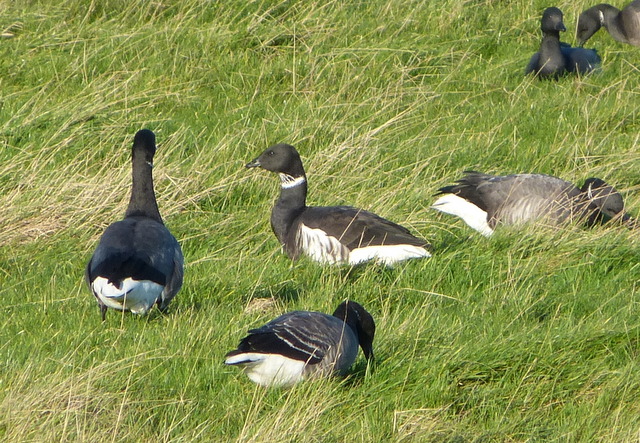 Black Brant – this very striking bird stood out amongst the Dark-bellieds
Black Brant – this very striking bird stood out amongst the Dark-bellieds
 Black Brant – the white collar is extensive, across the neck under the chin
Black Brant – the white collar is extensive, across the neck under the chin
Also in the same flock was a single Pale-bellied Brent Goose. Whereas our regular Dark-bellieds come from Russia, and Black Brant from North America or Eastern Siberia, we get a few Pale-bellieds from Svalbard, Franz Josef Land or Canada every winter. It was a great opportunity to compare three subspecies of Brent Goose in a single flock.
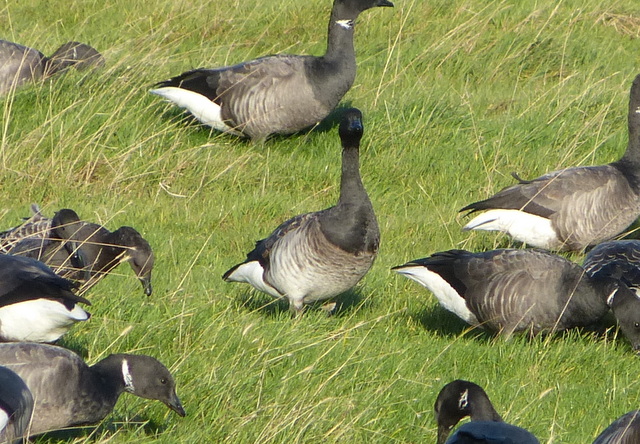 Pale-bellied Brent Goose – the near-white belly is obvious here
Pale-bellied Brent Goose – the near-white belly is obvious here
We spent some time watching the geese and particularly the Pale-bellied Brent Goose. Even though it was in the middle of a vast throng, it was clear that this bird had three juveniles accompanying it. It was also paired to a male Dark-bellied Brent Goose – a mixed pair, and the young birds appear to be hybrids between the two subspecies. This pairing is very rarely reported, given that the populations are typically geographically separated, but this pair has been returning for a couple of years now. It was particularly interesting to look at the young hybrids.
 Pale-bellied & Dark-bellied Brent Goose pair & hybrid young
Pale-bellied & Dark-bellied Brent Goose pair & hybrid young
 Pale-bellied Brent Goose – can you tell the 3 hybrid young from the others?
Pale-bellied Brent Goose – can you tell the 3 hybrid young from the others?
Also amongst the Brents was a small group of Pink-footed Geese. They were mostly in the longer grass and hard to see but one bird glimpsed occasionally appeared to have a neck collar. Eventually, it came out into view and we could read the letters on the grey collar – ‘THS’. A quick check back at base later revealed that I had actually seen this bird two years ago, nearby at Kelling! It was ringed as an adult male at Loch of Lintrathen in Angus on 16th December 2007, and had been seen in Norfolk over the winter of 2010/11 and in December 2012 at least.
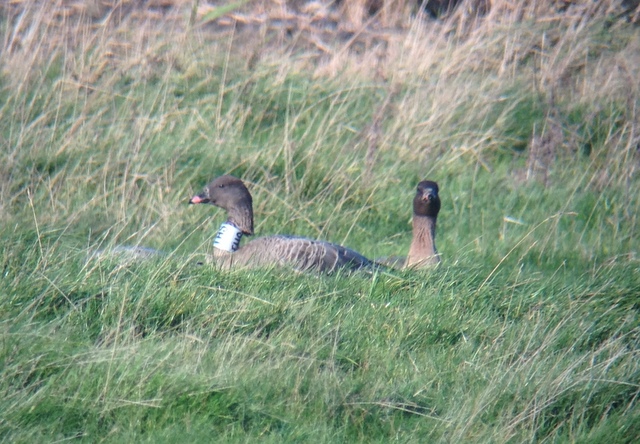 Neck-collared Pink-footed Goose – I had seen ‘THS’ at Kelling in Dec’12!
Neck-collared Pink-footed Goose – I had seen ‘THS’ at Kelling in Dec’12!
From there, we moved on to Holkham. Most of the Pink-footed Geese spend the days feeding inland, on discarded sugar beet tops in recently harvested fields. A few remain at Holkham, loafing around on the grazing marshes. By carefully positioning the car, we were able to get close to a view and get some great photos.
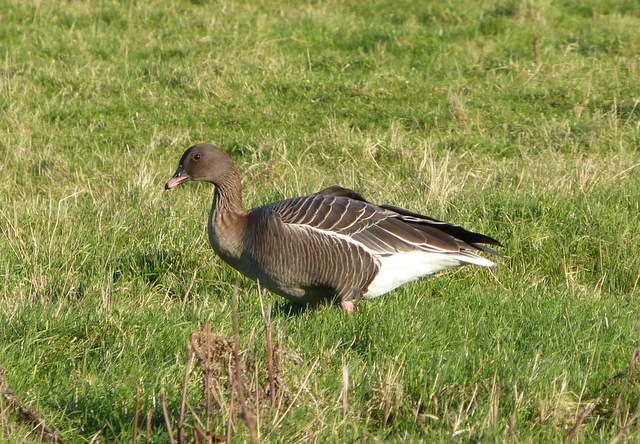 Pink-footed Geese – great photographic opportunities at Holkham
Pink-footed Geese – great photographic opportunities at Holkham
There were fewer geese at the west end of Holkham, and most of those present appeared to be Greylags. However, a closer look through the geese revealed several White-fronted Geese hiding in the deeper vegetation out on the grazing marshes.
The days are short in the middle of winter, and the only other thing required today was a quick visit to see Snettisham. It seemed like a nice way to round off the day. Out on the Wash, there were enormous quantities of waders. Lots of Golden & Grey Plover, Lapwing, Oystercatcher, Knot, Sanderling, Dunlin, Bar-tailed Godwit, Curlew, Redshank & Turnstone. It was great to watch the swirling flocks. The Golden Plover were quick to take flight. However, whenever a raptor flew over, all the other birds took to the air. The odd Marsh Harrier flew over, but two young Peregrines spent some time chasing fruitlessly after various waders, putting them all up.
On the pits, amongst the feral Greylags, were lots of ducks – mostly Wigeon and Mallard, but a few Gadwall, Tufted Duck and also several Goldeneye. There were a number of Little Grebes and amongst them a single Black-necked Grebe – quite a rare bird in Norfolk and a nice one for the list. As the sun started to go down, we walked back to the car – fittingly, the backdrop was provided by the Pink-footed Geese flying out onto the Wash to roost.
